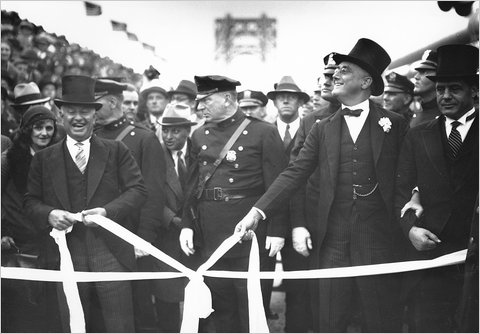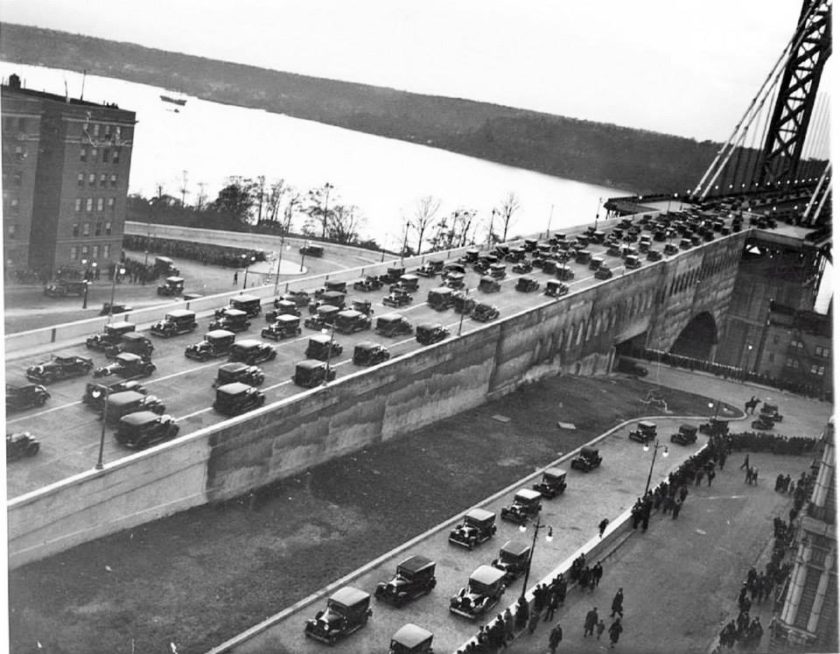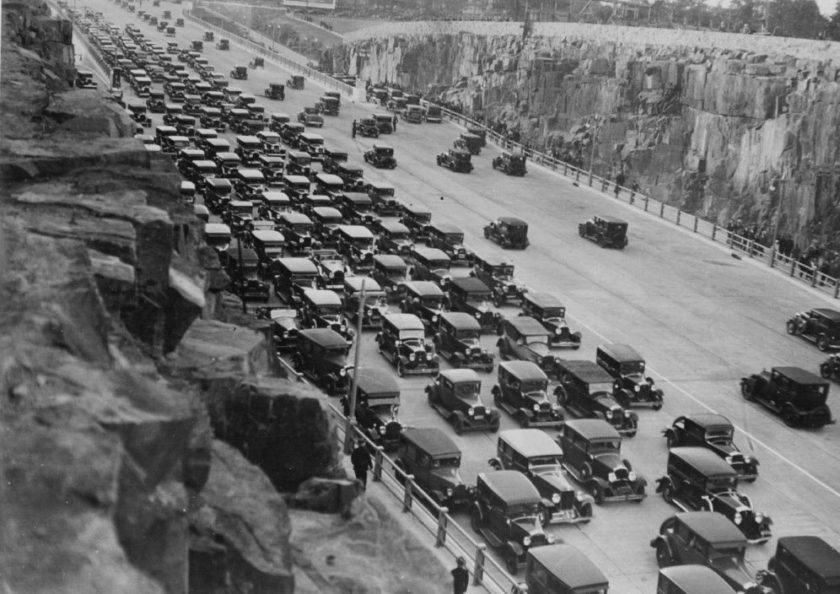

FORT LEE, N.J.—The George Washington Bridge was dedicated Oct. 24, 1931 amid great fanfare. Over 30,000 people (equivalent to the population of the entire Northern Valley from Old Tappan down to Englewood at the time) attended the ceremony, which featured an Army Air Corps airplane show and a military parade. New Jersey Gov. Morgan Foster Larson and New York Gov. Franklin D. Roosevelt, stylishly dressed in their suits and tophats, gave speeches and cut the ribbon. That evening, between 6 p.m. and 11 p.m., pedestrians were allowed to walk the length of the bridge.
But it was the following day, when the dignitaries were back in their offices and the spectator stands had been taken down, that things really got moving. When the bridge was opened to traffic on Oct. 25, the volume it saw set a new world record when 7,098 autos crossed it in a single hour, between 2 p.m. and 3 p.m. In the first 24 hours of operation, 57,778 cars crossed the bridge, as well as 35,580 pedestrians (and one horse).
It was actually a young man from Tenafly who was the first to drive across the bridge when it opened—but it wasn’t supposed to be.

That honor had been reserved for Jacob W. Binder, secretary of the Bergen County Chamber of Commerce and the Hudson River Bridge Association. That morning, Binder and his party were in a car at the front of the line, but many eager drivers—including 20-year-old William Agnew Jr. of Tenafly—had been lined up for hours waiting for a chance to cross.
When Binder’s auto took off from the New Jersey side, Agnew, who had reportedly been camped out in line for about 40 hours by that point, slammed on the gas of his brown roadster, overtook Binder’s car, and ended up reaching the New York side first—thereby claiming the honor of being “first to cross.” Agnew, who lived on Depeyster Avenue, had graduated from Tenafly High School in June and was working for a New York newspaper.
It seemed an astronomical figure back in 1932 that in the bridge’s first year of operation, 5.5 million cars crossed its span. Yet, by 1940 that number had already risen to 8.5 million. Now, in 2019, the bridge carries approximately 106 million vehicles every year.
Recently approved, and set to take effect in 2020, the bridge toll will rise to $16. In 1931, the toll for passenger cars was 50 cents. Tolls were collected in each direction. Pedestrians paid 10 cents each, which was lowered to 5 cents in 1934 before pedestrian tolls were eliminated entirely in 1940.

